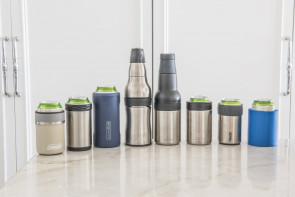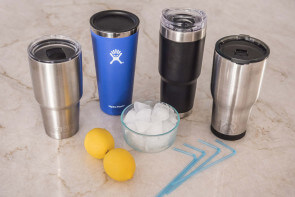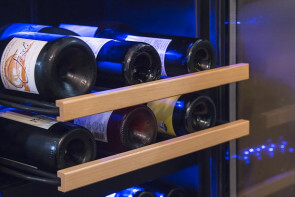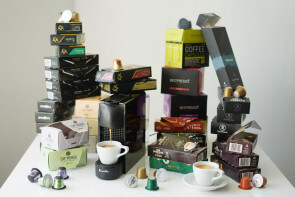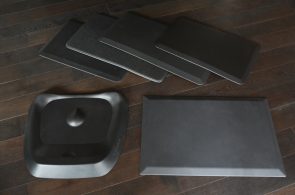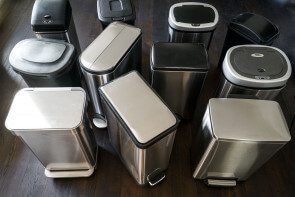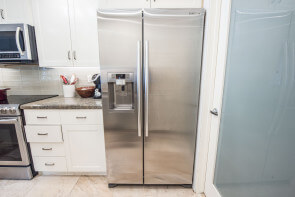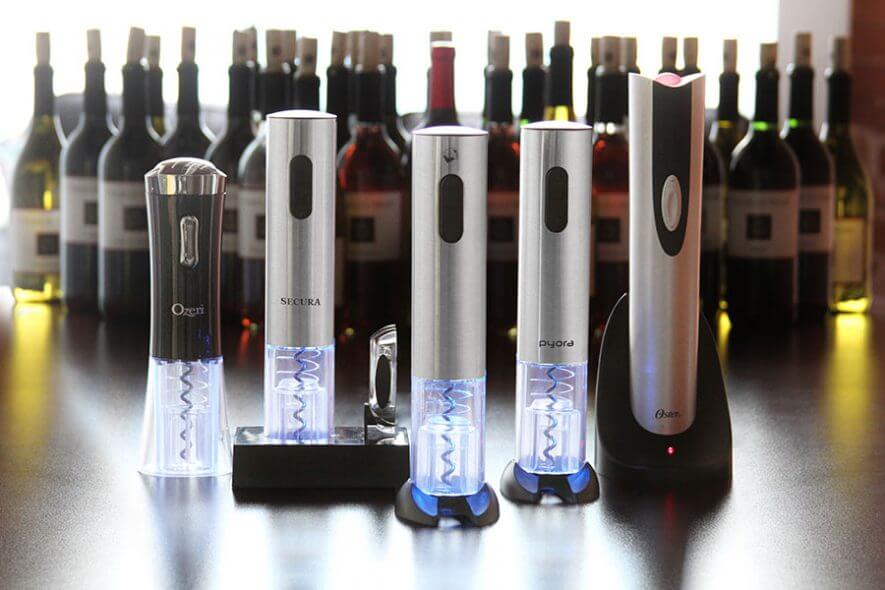
The Best Electric Wine Openers
After using Amazon’s top-reviewed electric wine opener for 18 straight months and analyzing 20 additional models, we narrowed our list down to five finalists. After testing for over 40 hours, we came to the conclusion that the Wine Enthusiast is the best electric wine opener on the market. It’s consistent, easy to use, elegant and requires little pressure to operate. For those with arthritis or limited hand strength, the Ozeri – Nouveaux wine opener was easiest to operate.
After using Amazon’s top-reviewed electric wine opener for 18 straight months and analyzing 20 additional models, we narrowed our list down to five finalists. After testing for over 40 hours, we came to the conclusion that the Wine Enthusiast is the best electric wine opener on the market. It’s consistent, easy to use, elegant and requires little pressure to operate. For those with arthritis or limited hand strength, the Ozeri – Nouveaux wine opener was easiest to operate.
Table of contents
- The 5 electric wine openers we tested
- Best overall: Wine Enthusiast
- Easiest to operate: Ozeri – Nouveaux
- Best for commercial use: Oster
- Other products we tested
- How we tested
- Why electric wine openers?
- Why you should trust us
- What we’ll test in the future
The 5 electric wine openers we tested
| Product Name | Battery Life | Ease of Use Rating | Price |
|---|---|---|---|
| Wine Enthusiast | 45 min | **** | $$ |
| Ozeri - OW02A-B Nouveaux | 25 min | **** | $$ |
| Oster - Cordless | 53 min | ** | $$$ |
| Pyora - Wine Opener Kit (Discontinued) | 40 min | ***** | $$$ |
| Secura - SWO-3Nl | 42 min | *** | $$ |
1. Best overall: Wine Enthusiast

In terms of overall performance, Wine Enthusiast led the pack. Wine Enthusiast’s model was one of the three that had the easiest-to-use transparent design… the see-through end removed any guesswork when removing your cork.
The highest-rated model on Amazon, the Oster, had a covered end that resulted in guesswork, unnecessary pressure, and sometimes, failed attempts when removing the cork.
After purchasing, we also realized Wine Enthusiast offered a version of the same model with the best foil cutter style we tested, a transparent one. Transparency here, just like the base, removes the guesswork of non-transparent cutters and will guarantee you aren’t left fumbling with second and third attempts at removing the foil.
The blue light emanating from the base when plugged in also makes for a nice, subtle nightlight the next time you need to fumble through the kitchen for a late night snack.
And while the battery life didn’t outshine any competitors, it was right on par, making it, along with Wine Enthusiast’s strong reputation for quality product design, big influences in our decision to crown Wine Enthusiast’s model the best overall wine opener.
2. Easiest to operate: Ozeri – Nouveaux
By far, the Ozeri – Nouveaux was the easiest, loosest grip wine opener we tested, which came as a surprise for the lowest-price product of the bunch. However, its high rating shined through, making it a great pick for anyone with arthritis or any other issues preventing them from using a corkscrew or applying a lot of pressure to the bottle.
Other options, while feeling more elegant/high-end, required a lot of pressure, both from the top and the bottom, in order to remove the cork. The Ozeri required some pressure, but still very little, a pleasant surprise for a product on the lowest price end of the models we tested.
On the negative side, it should still be understood that the Ozeri had the worst battery (so keep it plugged in), and also, the overall stability/product quality made it feel like it could have a short shelf life. It’s also not a product that will visually exude premium to house guests.
However, given the ease of cork removal and overall quality of what it’s tasked to do — open your wine, it’s a great option for those with arthritic issues or anything else that may require high pressure on their bottles.
Also our budget pick
Even if you don’t have arthritis, the Ozeri is a high-quality product that should find its way onto any budget-conscious shelf.
If you like to drink wine but don’t care about sticking your pinky in the air or the need to impress guests, the Ozeri is a great option for your repertoire. It’ll open wine with ease and offer exceeding value over its price point.
The only negative to the model is its battery life, so if you open two or more bottles, make sure you remember to plug it back in.
3. Best for commercial use: Oster
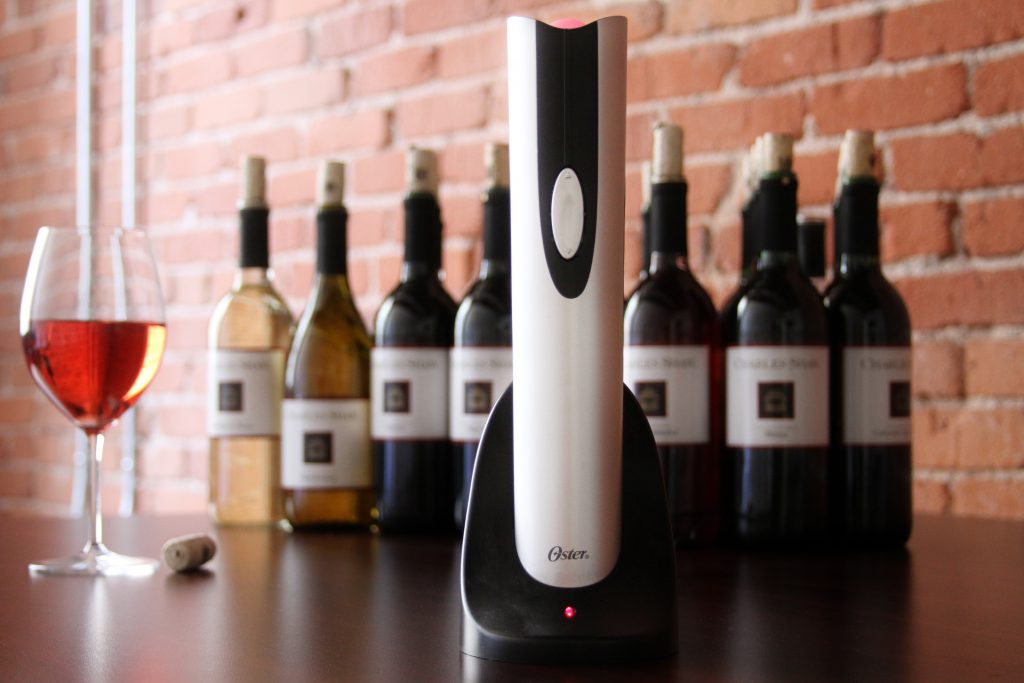
The Oster, a model I had owned and tested for 18 months, is perfect for commercial applications. It had the best battery life of all the models we tested, at 53 minutes on average, and overall, had no issues in the almost two years owned.
It’s not perfect or elegant due to the high pressure it requires on the top and bottom to remove many corks, but it gets the job done. Since neither the cutter nor the bottom of the opener is transparent, you’ll have to guess at timing as well.
Despite this, it’s a great fit for high-turnover environments, such as catering, where you may need to open dozens upon dozens of bottles in one evening — and also don’t want the wine opener to die out. And if you’re opening enough bottles, there’s no doubt the frequency of your opens will make the cutter and timing issues almost nill.
Other products we tested
4. Secura
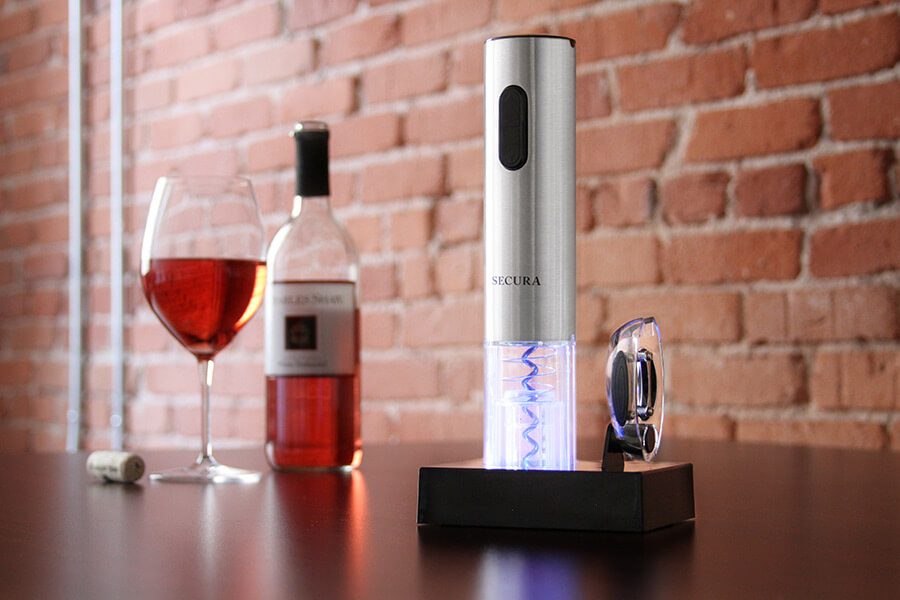
The Secura felt like a poor man’s version of the Oster. On our first try, the base slightly frayed, which was shocking. From there, a few of the openings made slight “crack” sounds that made me wonder about the long-term viability of this product.
In addition, the Secura needed more hand-grip overall in order to keep it tightly in place and remove the cork from the base. Two of the tests resulted in the wine bottle moving despite a fairly strong grip.
On the positive side, the Secura’s transparent cutter that made foil removal easy was the best option of the bunch, but as mentioned, it’s the least important feature of wine openers. It did, however, illuminate that our pick for best overall, Wine Enthusiast, also had a transparent cutter option of the same opener available.
5. Pyora

As previously mentioned, the Pyora electric opener was right on par with the Oster in terms of consistency, performance, and battery life, but its main drawback was the need to buy it as part of a set. Pyora has since discontinued this set.
How we tested
First, we broke the wine openers into several judging categories and areas of value: battery life, foil/top cutter, product quality, and of course, ease of opening the wine.
Battery duration has a few positive benefits. First, having used one of these for a year — and drinking several dozen bottles of wine/being a disorganized person, there were several unfortunate scenarios where I forgot to place the opener on the charger, which led to a dead opener in times of need.
Second, electric wine openers have value for commercial applications, such as catering, so if that’s you, you probably don’t want an opener that dies after a few opens. So, battery life can be important.
Unfortunately, cold testing these on actual wine from start to end would have been pretty tough to do without spending thousands of dollars, so we did the best next thing and ran the battery from full to end, gave it a full 24 hours to charge, and then did so again three times in order to create an average.

Overall, the Oster led the pack by a considerable margin, with an average battery life of 53:52. The Pyora, Wine Enthusiast and Secura models ran in a similar 40+ range, with Ozeri at the back of the pack with a 25:49 average. If you need the opener for commercial applications, the Oster is your best bet.
If you need an opener for everyday use, it’s possible battery life will never come into play if you’re consistent — and the top four models will make that especially certain. If you even forget once, it’s possible the Ozeri’s battery life may come back to bite you, but it has other positive features to make up for that as well.
After the battery test, we used each opener on six different bottles of wine, all of different varietals, simply to see if there was any variation based on the type of bottle we opened, and also to get a significant sample size with each bottle in order to get a true impression.
When cutting, we judged overall build quality and simplicity. When opening, we judged ease, consistency, and also the hold firmness required to open the bottle — a characteristic that could make a big difference for those with a disability or arthritis.
Across the six bottles, if the open went flawlessly and didn’t require a strong grip on the base or the top, it was judged as “good”.
If the open went flawlessly but required a strong grip, or if it didn’t require a strong grip but had something strange happen (such as a readjustment or strange sound, signifying bad build quality) it was judged as “fair.”
If the open went poorly/didn’t happen at all, or something else erroneous happened, it was judged as “bad.” Fortunately, this only happened once with the Secura, which shockingly had the bottom partially crack on the very first open!

Overall, the Pyora, Ozeri, and Wine Enthusiast models performed best in our test opens. They each required little pressure to operate, had predictable results, and had no real problems from start to finish. The Oster and Secura, on the other hand, required additional strong pressure to operate with consistency.
One thing that also quickly became apparent in the testing was the superiority of the transparent bottom design. Transparency made it easy to predict where in the opening process you were, while the closed base of the Oster resulted in more unpredictable and occasionally failed opens. If coordination isn’t your thing, the transparent base automatically puts the other four models ahead of the Oster.

The foil/top cutter was a small detail that most of the wine openers did well, since the act of creating a circular blade that could cut out the top of the wine was pretty straightforward. However, there were subtle differences that made some cutters more preferable than others.
The Ozeri wine opener, the cheapest of the lot, reflected the price, as its foil cutter felt cheap and had a confusing design. To cut open a bottle of wine, you have to “clamp” the sides of the opener in order to express pressure on the bottle. However, this same clamp, attached to the top of the opener, feels as if it’s the function that actually allows you to remove the foil cutter from the base.
In actuality, all you have to do is turn the cutter right in order to remove the top. For experienced or frequent owners, this will frequently become obvious, but for first-time users or guests in your home, it could become irritating.
Otherwise, upon evaluating other cutters it became obvious the transparent cutters were the most valuable. Non-transparent cutters make you guess/predict the exact moment you’ve made it to 360, often causing incorrect guesses or second tries. The Secura and Wine Enthusiast models offer transparent cutters, which made them the most attractive of the lot.
Overall, the marginal improvement of a slightly better cutter should not make or break your electric wine opener decision. However, it is a product difference that we noticed amongst the different versions and can indicate a slightly better opener.
Why electric wine openers?
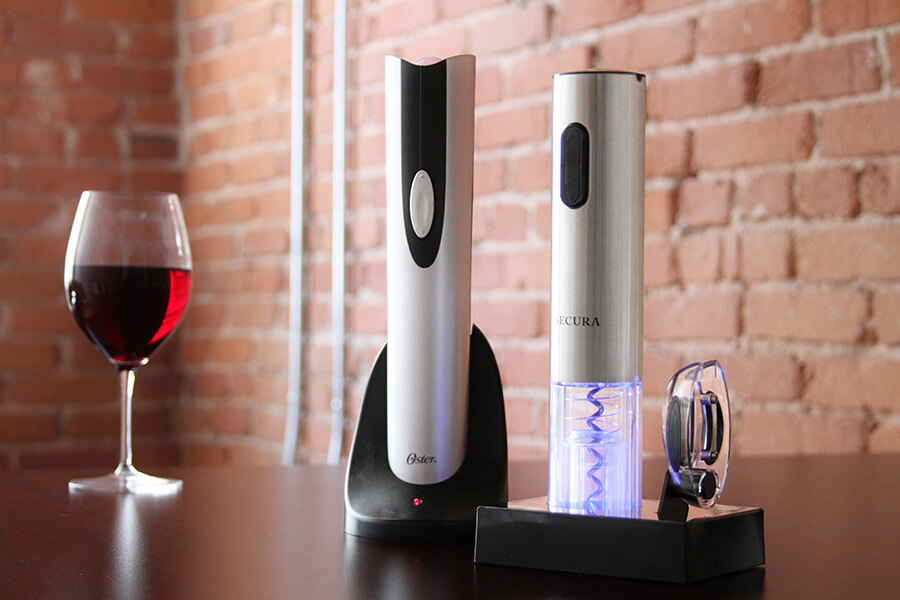
As I checked out of Trader Joe’s with 30+ bottles of wine and told the checkout staff about the plan to test out automatic wine openers, he quickly questioned me back — “I don’t get why people use electric wine openers. The traditional corkscrew works just fine.”
He had a point… the traditional corkscrew does work just fine, but it specifically works fine for a certain set of people. Not everyone wants to use a corkscrew or will be consistently successful at using one.
For example, I’m pretty goofy. Coordination has never been my strong suit. I had, with frequency, suffered from open-failure with a corkscrew. The cork broke, I got cork in the wine, or we couldn’t get the cork out, period.
It wasn’t every time out, but it was enough to be frustrated. After a bottle or two, the success rate would very frequently get worse.
Due to this frustration, I got to the point where I put my pride aside and asked my wife to open the wine for us most of the time. As you might imagine, it wasn’t a great feeling.
Enter electric wine openers. I basically lucked into buying my wife the Oster for Christmas, and it turned into a gift for me. I was never going back.
The electric wine opener isn’t for everybody. It’s not as pinky-in-the-air elegant as a corkscrew. You won’t find one at a five-star restaurant. You’re probably not going to impress your date with it. And according to some reports, you might not want to trust them with fancier bottles of wine.
But if you’re simple, don’t raise your nose when drinking a bottle of wine, and prefer function over elegance, electric wine bottle openers are a great fit for you.
In addition, a great additional benefit of automatic wine openers is that they’re far superior to corkscrews if you have arthritis or another disability. You might have always loved the corkscrew, and that’s okay, but you’re starting to feel some discomfort in your hands and are looking for another option. Electric wine openers can offer some relief.
Why you should trust us
As I mentioned above, I’ve been using an electric wine opener for a year and a half, and have opened an estimated 300+ bottles using them. I pretty much fit the stereotype of the ideal user — love wine (but not in a need to buy a $200 bottle kind of way), am a bit uncoordinated, and prefer function over elegance… but without sacrificing quality.
I spent 40+ total hours researching electric wine openers, asking other experts, and crowd-sourcing amongst users of Reddit. Unfortunately, the /r/wine/ subreddit wasn’t very helpful, so I took to Google and Amazon to compare and contrast the reviews and feedback on many of these openers.
This led me to compare ~20 units until I narrowed down my options to a final five, including the Oster, which was the highest-rated on Amazon and the product I already owned and had been using with frequency.
What we’ll test in the future
Although 18 months of testing has already been done on the Oster, it became clear that wasn’t the best long-term model to evaluate.
The cheaper Ozeri identified itself as a leader in the pack with some questions about durability… if it can keep up with other models, it’s possible it can pass Wine Enthusiast’s opener and take the number one slot.
More Reviews
Thermos - 2700TRI6
RTIC - 30-Ounce Tumbler
EdgeStar - 34-Bottle Fridge
Balls of Steel
Instant Pot - DUO60
Brawny - Pick-A-Size
simplehuman - CW2024
OXO - 3-Blade Tabletop
Windex
Whirlpool - WRX 735SDHZ









